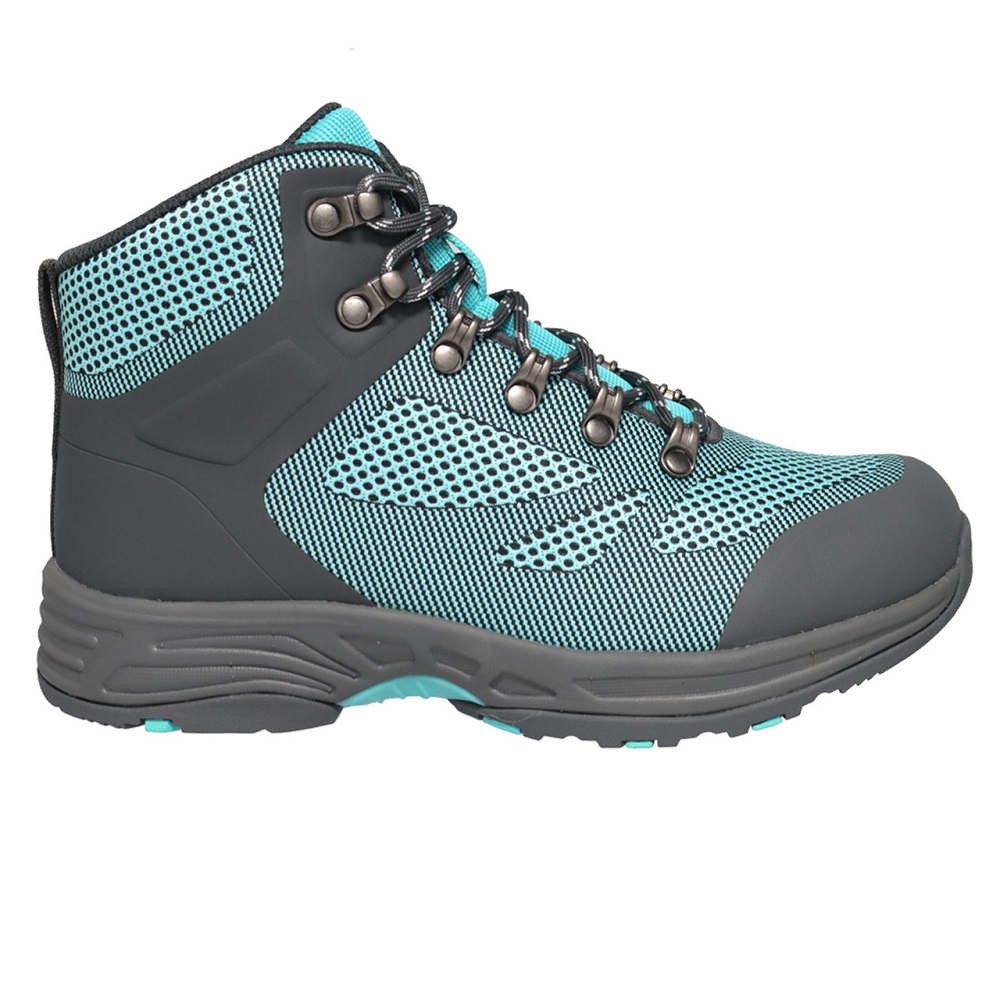Importance of Choosing the Right Hiking Boots
Selecting the right hiking boots is essential for a comfortable outdoor experience. Proper footwear ensures safety, reduces fatigue, and enhances performance during hikes. Womens hiking boots must provide both support and durability to tackle various terrains. Investing in high-quality hiking boots can prevent injuries and improve overall adventure satisfaction.
How Incorrect Footwear Can Affect Your Hiking Experience
Wearing unsuitable hiking boots can lead to painful blisters and sore feet. Poor support may cause ankle strains and knee discomfort. Inadequate traction increases slipping risks on wet or uneven surfaces. Breathability issues can result in sweaty or overheated feet. These problems reduce your enjoyment and may even cut your hike short.
Benefits of Investing in High-Quality Women’s Hiking Boots
High-quality womens hiking boots offer superior durability and reliable performance. They provide excellent cushioning, minimizing pressure on feet during long treks. Advanced waterproof designs keep feet dry in wet conditions. Enhanced traction ensures better grip on varying terrains. Comfort-focused designs prevent injuries and ensure an enjoyable outdoor experience.
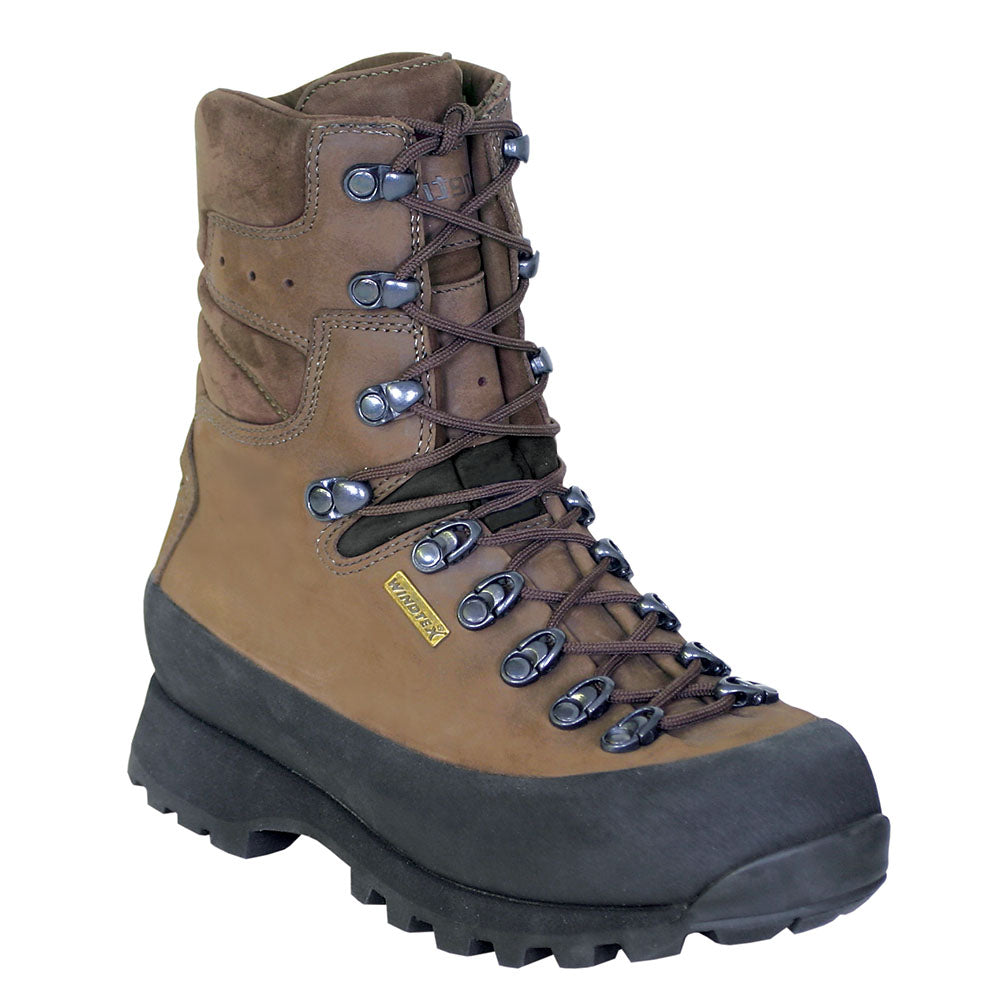
Key Features to Look for in Women’s Hiking Boots
Selecting womens hiking boots with the right features is crucial for comfort and safety. Quality boots can handle challenging terrains while reducing fatigue and preventing injuries. Below are the essential traits you should consider:
Durability and Material Quality
Durability is a top priority for hiking boots. High-quality materials like genuine leather or robust synthetic fibers ensure longevity. Look for reinforced stitching and abrasion-resistant uppers to handle wear and tear. Durable boots protect your feet and provide better value over time.
Comfort and Cushioning for Long Treks
Comfortable boots reduce foot fatigue during long hikes. Choose options with adequate padding and supportive midsoles. EVA or PU foam midsoles can provide comfort and absorb shock effectively. A snug fit around the heel and arch adds stability. Prioritize designs with ample toe room for long-lasting comfort.
Waterproofing and Breathability Features
Waterproof boots keep feet dry during wet hikes. Look for technologies like Gore-Tex or waterproof membranes. However, excessive moisture retention can cause discomfort. Breathable fabrics or mesh panels help airflow and prevent sweaty feet. The right balance of waterproofing and breathability is essential.
Traction and Sole Design for Versatile Terrain
Traction is vital for safety on trails. Deep lug patterns on soles ensure a good grip on various terrains. Vibram soles or other high-quality rubber materials enhance traction. Consider boots with flexible soles for uneven ground and rigid ones for rocky paths. Good traction protects you from slips and falls.
Choosing boots with these features ensures a more enjoyable and secure hiking experience. Always evaluate your needs and the trail conditions before buying boots.
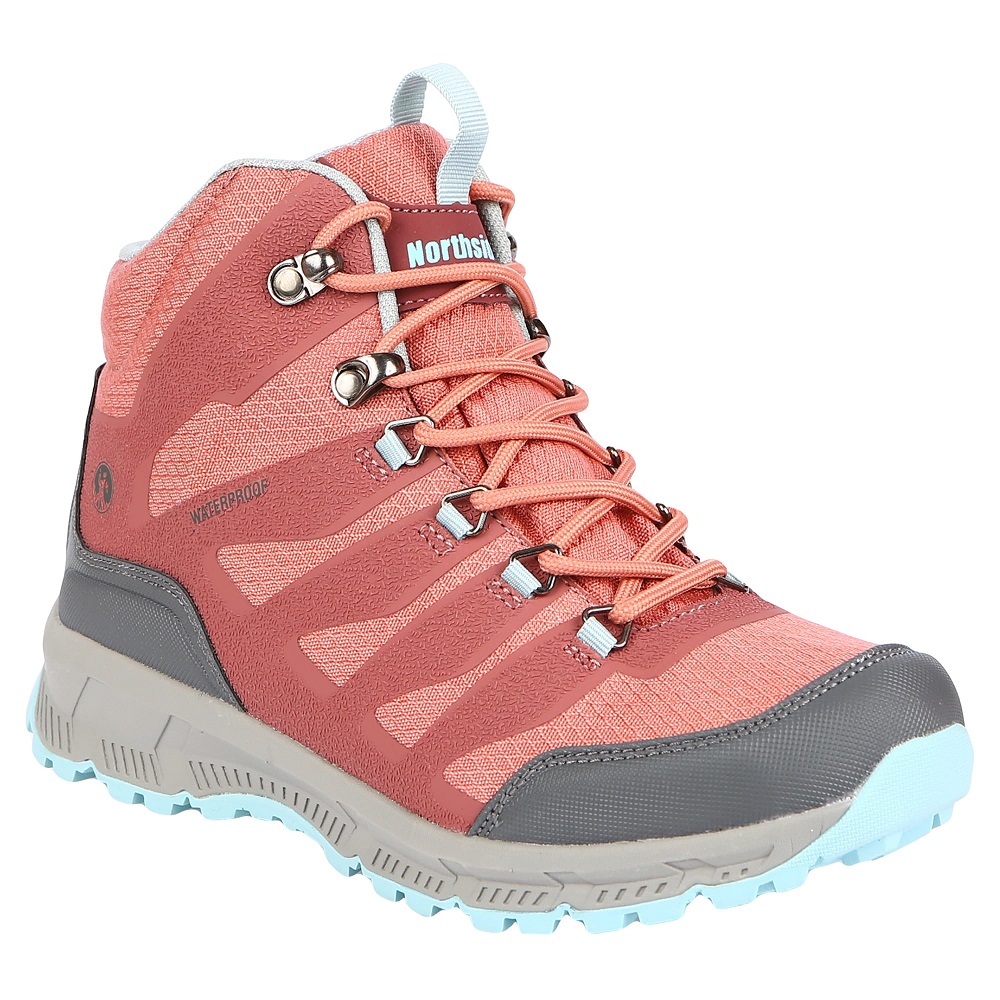
Categories of Women’s Hiking Boots
Choosing the right category of women’s hiking boots is essential for meeting specific hiking needs. Different boots cater to varying terrains and hike durations. Below are the three main categories to consider:
Lightweight Hiking Boots for Day Hikes
Lightweight hiking boots are ideal for short and easy trails. They are designed for speed and comfort. These boots feature breathable materials to keep feet cool during quick hikes. Flexible soles ensure great grip on mild terrains and flat surfaces. Lightweight boots minimize fatigue, making them perfect for casual hikers.
Midweight Boots for Moderate Terrain
Midweight hiking boots offer a balance between comfort and durability. They work well on uneven paths and moderate trails. These boots have enhanced cushioning for long hours of walking. Durable materials like leather or synthetics handle rugged terrain effectively. Improved traction reduces slipping on wet rocks or muddy paths. Midweight boots are versatile for varied outdoor adventures.
Heavyweight Boots for Challenging Trails
Heavyweight hiking boots provide maximum support for tough and demanding hikes. They are built for rocky, steep, or extreme terrains. Reinforced soles and thick materials increase stability and durability. Often waterproof, these boots keep feet dry in harsh weather conditions. Their rigid design prevents injuries and enhances safety. Heavyweight boots are perfect for advanced hikers or multi-day treks.
Top Brands for Women’s Hiking Boots
Selecting the right brand is crucial when buying womens hiking boots. Trusted brands focus on quality, durability, and comfort. Here, we explore leading premium brands, budget-friendly options, and eco-conscious choices to help you find the best fit.
Industry Leaders offering Premium Quality Boots
Premium brands prioritize cutting-edge technology, advanced materials, and exceptional performance. These hiking boots are ideal for serious outdoor enthusiasts seeking reliability and comfort.
- Salomon: Known for lightweight, durable boots with advanced traction and snug fits. Great for tough terrains.
- Merrell: Offers versatile hiking boots with excellent cushioning, arch support, and waterproof technologies.
- Lowa: Renowned for European craftsmanship and superior stability, ideal for long and rugged hikes.
- Scarpa: Focuses on high-quality materials, durable soles, and innovative designs for demanding trails.
Choosing industry leaders ensures you get boots with advanced features for challenging adventures.
Budget-Friendly Options with Reliable Features
For hikers on a budget, some brands deliver quality and performance without a hefty price tag. These boots balance affordability and functionality for casual or moderate hiking needs.
- Columbia: Offers budget-friendly hiking boots with durable construction and breathable designs.
- KEEN: Known for comfortable fits, reliable waterproofing, and good traction at reasonable prices.
- Hi-Tec: Provides lightweight boots with simple but effective features, perfect for beginners.
- Northside: Delivers affordable options with sturdy soles and decent comfort for shorter hikes.
Budget-friendly brands are excellent for casual hikers or those exploring less demanding trails.
Sustainable and Eco-Friendly Footwear Choices
Eco-conscious hikers can pick brands that emphasize sustainability. These companies use recycled materials, ethical manufacturing, and eco-friendly processes.
- La Sportiva: Creates eco-friendly boots with sustainable leather, recycled components, and reduced chemical use.
- Adidas Terrex: Focuses on using recycled plastics and fabric without compromising performance.
- Timberland: Known for sustainable initiatives like using recycled rubber and ethical sourcing practices.
- Vivobarefoot: Produces minimalist designs with natural materials and reduced environmental impact.
Sustainable brands ensure you enjoy hiking while minimizing your ecological footprint.
Exploring these categories can guide you to the perfect pair of womens hiking boots. Consider your specific needs, budget, and values to make the best choice.

How to Correctly Size and Fit Hiking Boots
Proper sizing and fit are crucial for hiking comfort and safety. Ill-fitting boots can cause blisters, pinched toes, or even serious foot injuries. Taking the time to measure your feet and test boots properly will ensure a better hiking experience. Below are key practices to find the perfect fit.
Tips for Measuring Your Feet
- Measure Feet in the Evening: Feet often swell during the day. Measuring in the evening gives more accurate sizing.
- Use Socks You’ll Wear While Hiking: Always wear the socks you plan to hike in when measuring.
- Trace and Measure Your Foot: Place your foot on paper and trace it. Measure the length and width for sizing.
- Account for Foot Expansion: Leave extra room for feet to expand during long hikes.
- Use a Brannock Device: This tool gives precise foot length and width measurements.
Importance of Testing Boots Before Purchase
- Try Boots in-Store or at Home: Wear both boots and walk around. Test them on inclines or stairs if possible.
- Check for Immediate Comfort: There should be no pinching, pressure points, or discomfort.
- Test Toe Room: Make sure your toes can wiggle freely to prevent nail pain.
- Secure Fit Around Heels and Ankles: Avoid any heel slipping; this reduces blister risks.
- Wear with Hiking Socks: Verify the fit with socks you’ll actually hike in.
Signs Your Boots Fit Properly
- Snug but Not Tight Fit: Boots should hug your feet without squeezing.
- Ample Wiggle Room for Toes: Your toes should feel free to move.
- No Heel Slippage: Your heel should stay in place during movement.
- Supportive Around the Arches and Ankles: Good support prevents fatigue and injuries.
- No Pain or Pressure: Walk in them to ensure total comfort before committing.
Getting the right size and fit improves hiking performance and protects your feet. Always prioritize fit over style to ensure a comfortable adventure.
Maintenance Tips for Long-Lasting Hiking Boots
Proper maintenance ensures your womens hiking boots last longer and perform better on trails. Regular upkeep prevents early wear and tear and keeps your boots in peak condition. Follow these tips to maximize the lifespan and functionality of your boots.
Cleaning and Drying After Use
- Remove Dirt and Debris Immediately: Wipe off mud, dirt, and debris as soon as possible.
- Use Mild Soap and Water: Clean your boots with lukewarm water and a gentle soap.
- Avoid Harsh Cleaning Products: Avoid bleach or strong chemicals that can damage leather or synthetic materials.
- Dry Boots Naturally: Let them air dry at room temperature away from direct heat sources.
- Remove Insoles and Laces: Take out insoles and laces to dry them separately for thorough cleaning.
- Use a Soft Brush: Use a soft brush to scrub hard-to-reach areas like seams and lug soles.
Repairing Minor Damages
- Fix Small Scuffs or Scratches: Use a leather conditioner to restore damaged surfaces on leather hiking boots.
- Reapply Waterproofing: Refresh waterproof coatings with sprays or waxes after cleaning.
- Repair Loose Stitching: Address loose stitching with a sewing kit or take it to a professional.
- Replace Worn-Out Laces or Insoles: Swap old laces or insoles with new ones for improved comfort and support.
- Use Adhesive for Minor Sole Damage: Glue small cracks or peeling soles with shoe adhesives.
Storage Solutions to Prolong Boot Life
- Store in a Cool, Dry Place: Keep your boots in a well-ventilated area away from sunlight and moisture.
- Use Boot Trees or Stuffing: Insert boot trees or stuff them with paper to maintain their shape.
- Avoid Storing in Plastic Bags: Plastic traps moisture, which can lead to mold or material decay.
- Keep Them Away from Direct Heat: High temperatures can damage materials and adhesives.
- Rotate Usage: Avoid wearing the same boots every time, giving them time to rest.
By cleaning, repairing, and storing hiking boots properly, you maximize their durability and comfort. Implement these practices to ensure they remain reliable for all your outdoor adventures.
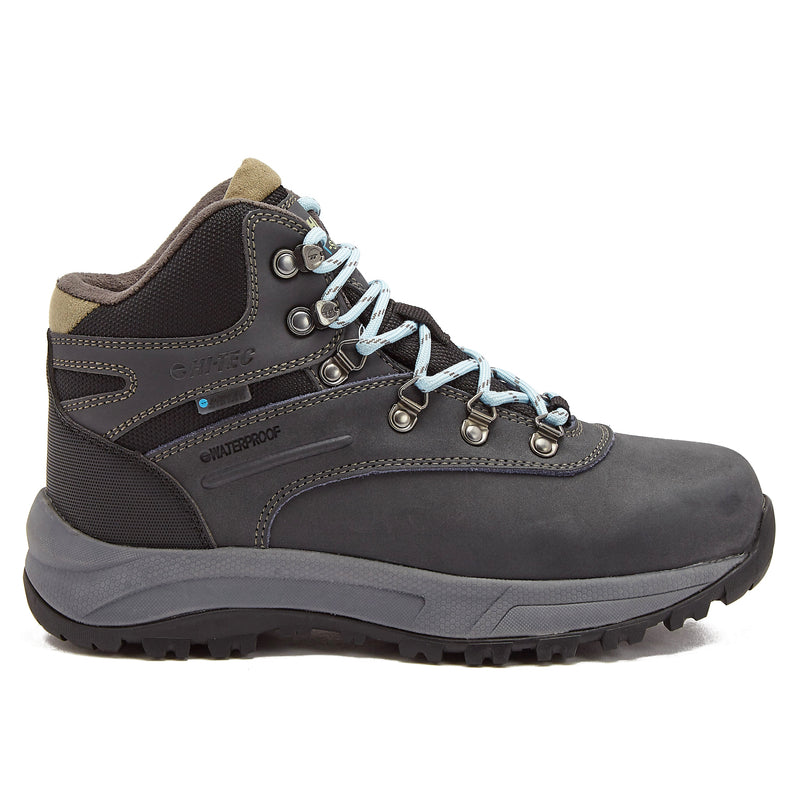
Common Mistakes to Avoid When Buying Hiking Boots
Choosing the right hiking boots requires careful consideration. Avoiding common mistakes can save discomfort and wasted money. Below are errors to watch for when selecting womens hiking boots.
Overlooking Terrain-Specific Needs
Hiking boots must suit the type of terrain. Many hikers underestimate their trail’s demands.
- Trail Conditions: Flat paths need lightweight boots. Uneven trails require more robust, midweight options.
- Weather Compatibility: Wet trails demand waterproof boots. Dry areas need breathable designs for airflow.
- Versatility: Boots that handle a range of terrains ensure flexible use over various outdoor adventures.
- Ignoring Grip Needs: Slippery trails need deep lugs and solid traction for safety.
Neglecting terrain-specific features causes discomfort and risks injuries during hikes. Always match the boots to the trail.
Prioritizing Style Over Functionality
Attractive designs lure many buyers, but good looks alone are not enough for hiking boots.
- Style vs. Comfort: Fashion boots often lack proper cushioning for long treks. Comfort should always be a top priority.
- Durability Concerns: Stylish boots may use less sturdy materials that wear out quickly on rugged trails.
- Traction Variability: Trendy boots might offer poor grip, risking slips and falls. Functional soles matter more.
Choosing style over utility leads to underperforming boots that fail in challenging conditions. Focus on features, not looks.
Ignoring Break-In Periods
Skipping the break-in phase is a common oversight. It leads to discomfort and fit issues.
- Blisters and Pinching: Wearing new boots on hikes can cause painful foot sores.
- Fit Adjustment: Break-in time helps the boots mold to your feet for a better fit.
- Cushioning Evaluation: Testing boots before full hikes reveals cushioning performance across terrains.
- Gradual Usage: Begin with short walks, gradually increasing distance to avoid strain.
Ignoring this step risks foot injuries and a ruined hiking experience. Ensure proper break-in time before adventures.
Avoid these common mistakes to ensure you choose hiking boots that deliver comfort, durability, and safety. Thoughtful planning will lead to enjoyable and worry-free hikes.
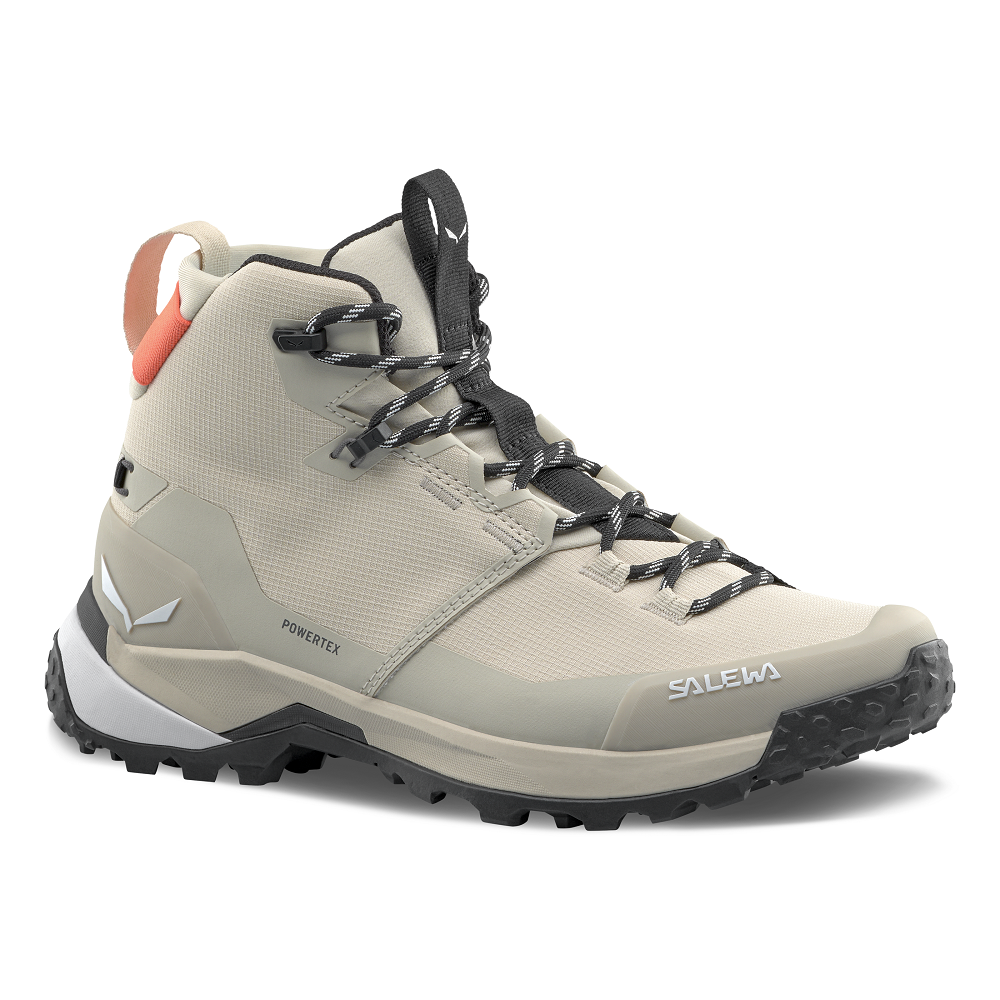
Conclusion
Choosing the right womens hiking boots is essential for enjoying outdoor adventures. Durability, fit, comfort, and maintenance are crucial aspects to consider when making a selection. Quality boots not only enhance your performance but also reduce the risk of injury.
By taking the time to assess your needs, try on different styles, and research brands, you can find a pair of boots tailored to your requirements. Proper care will help extend the life of your shoes, ensuring they are ready to accompany you on countless hikes.
As you prepare for your next adventure, remember the importance of investing in reliable hiking tools. With the right pair of hiking boots, you can explore breathtaking landscapes and enjoy the great outdoors with confidence and comfort. Equipped with knowledge and the necessary gear, every trail becomes an opportunity for discovery and enjoyment. Happy hiking!
